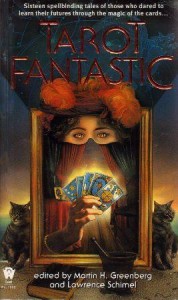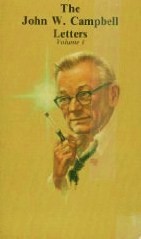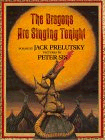Webmaster’s note 1/17/2016: This is an old review from the previous version of the site, which we’re bringing in as a post so that it’ll be searchable in the reviews categories with newer content.
Longitude
book by Dava Sobel
Reviewed by Rodford Edmiston
The image of the lone genius, prevailing against the odds to make a better world, is an attractive one. It has also been criticized as a romantic fantasy. The story of John (Longitude) Harrison disproves this. It also disproves the conventional wisdom that creativity is an activity solely of the young. For John Harrison’s greatest invention – something quite unlike anything he had built to that point – was made when he was in his seventies, and required him to take two long steps to one side… and move a century forward. In the process he had to abandon much of what he had already accomplished in order to succeed. But he did so, and he did succeed, where all others had failed.
Being a student of the history of technological development I was already vaguely familiar with the problems of developing accurate timepieces, as well as the difficulty of producing a clock which was accurate and rugged enough to be used at sea to find longitude. This book – and the A & E miniseries it inspired bearing the same name – made me realize just how important the problem of finding longitude was, and the difficulty of its solution.
You can find latitude pretty simply; it’s based on the height of the sun (or another celestial reference) above the horizon, which changes in regular fashion with the time of year and the distance from the equator. A fairly accurate estimate can even be made based on the length of the day (that is, the daylight period) versus the time of year. Finding longitude, however, requires comparing local time to the time at a standard meridian. Accuracy and precision are both important. Being a minute off produces an error of one-fourth of a degree in longitude, which at the equator equals 17 miles.
Yet early in the Eighteenth Century no clock existed which was accurate enough for this purpose, let alone capable of being rolled, tossed and exposed to extreme changes in temperature and humidity while remaining accurate. Even the master clock at the Royal Observatory at Greenwich had to be adjusted almost every day, using solar and stellar observations.
Actually, the first sentence in the previous paragraph isn’t quite accurate. Such clocks did exist, but were unknown to the world outside the small Yorkshire village where John Harrison lived.
Harrison is one of those geniuses who inexplicably appear from time to time among mere humans. Though from humble circumstances, he was a voluminous reader, and taught himself about navigation, celestial observation and clockmaking by reading books on the subjects. Even if he hadn’t made his clocks he would rate a footnote in history for his work on music and its mathematical relationships. Aside from that, he was a master carpenter, whose craftsmanship with wood had earned him prime business from important local people. But he did build his clocks, and in comparison to those his other accomplishments pale.
Harrison found simple, elegant, workable solutions to problems others declared impossible. His largest clock is in a manner tower in his home town. Since that is near the seacoast, and since salt air corrodes metal, Harrison made this clock almost entirely of wood. He used an inherently frictionless design, so it doesn’t wear out and never needs lubricating. Except for a brief period in 1884, when it was stopped for refurbishing, this clock has run continuously since completion in 1722. On gears and pintles and pivots and cogs of wood. And when it was finished – and for several years after – it kept better time than any observatory or laboratory clock in the world. By the time anyone else had caught up to it, Harrison was already well into building his seafaring longitude clocks. (Note: Large mechanical clocks are easier to make accurate than small ones. Which is one reason Harrison’s seagoing chronometers are so remarkable. Even the largest was far smaller than (though about as heavy as) the typical observatory floor clock of the time, while being more accurate in conditions where the floor clock wouldn’t function at all. And his fourth timepiece was a revolution in miniaturized accuracy.)
Small wonder learned men of the day disbelieved his claims, stating flatly that such accuracy was impossible in *any* timepiece. Small wonder that when he proved them wrong, passing tests they devised, they defended their positions in any way they could. Even if that meant changing the rules. As often happens, the cheaters accused their victim of cheating. Vindication took several decades of hard, soul-withering effort, most of it not associated with building clocks, but fighting the ill will of people with a vested interest in seeing him fail. In the end, Harrison triumphed as much through sheer stubbornness as genius.
Longitude, the book, is less a biography or a history than it is an examination of one of the greatest technological innovations in human history, and its effect on people and events. Longitude, the miniseries, goes into far more biographical and historical detail, of both Harrison and the man who repaired his clocks some two centuries later, Rupert T. Gould. (Who has much less mention in the book.) The volume is a slim one, and still in print. It is well worth reading, even if you have to buy it. The miniseries runs 4 hours, and if you missed it buying the tapes or DVDs are expensive. However, that, too, is worth the price for someone interested in navigation, invention, history, or simply seeing the little guy triumph over the big guys.
Some associated URLs:
- http://www.rog.nmm.ac.uk/museum/harrison/index.html
- http://www.nmm.ac.uk/cmr/long_index.html
- http://www.pbs.org/wgbh/nova/longitude
- http://www.bhi.co.uk
- http://www.harmonics.com/lucy/harrindex.html
- http://www.harmonics.com/lucy/lsd/harmap.html
- http://www.rog.nmm.ac.uk/museum/harrison/refs.html
- http://watchzone.hypermart.net/classics/posts/30.html
END
This document is Copyright 2000 Rodford Edmiston Smith. Anyone wishing to reprint or repost this material must have permission from the author, who can be reached at stickmaker@usa.net.







